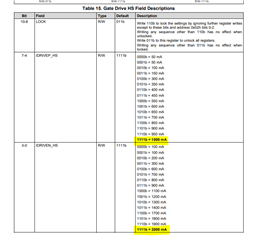Other Parts Discussed in Thread: TIDA-01629
Hi Team,
After referring to TIDA-01629, the customer used this board to control the motor and found that the motor could not rotate. During the program debugging, it was found that the 6th bit of the No. 2 register of the DRV8350S chip is 1 (Indicates VCP charge pump and/or VGLS undervoltage fault condition). Is there a problem with the charge pump or VGLS?
Thanks,
Annie


